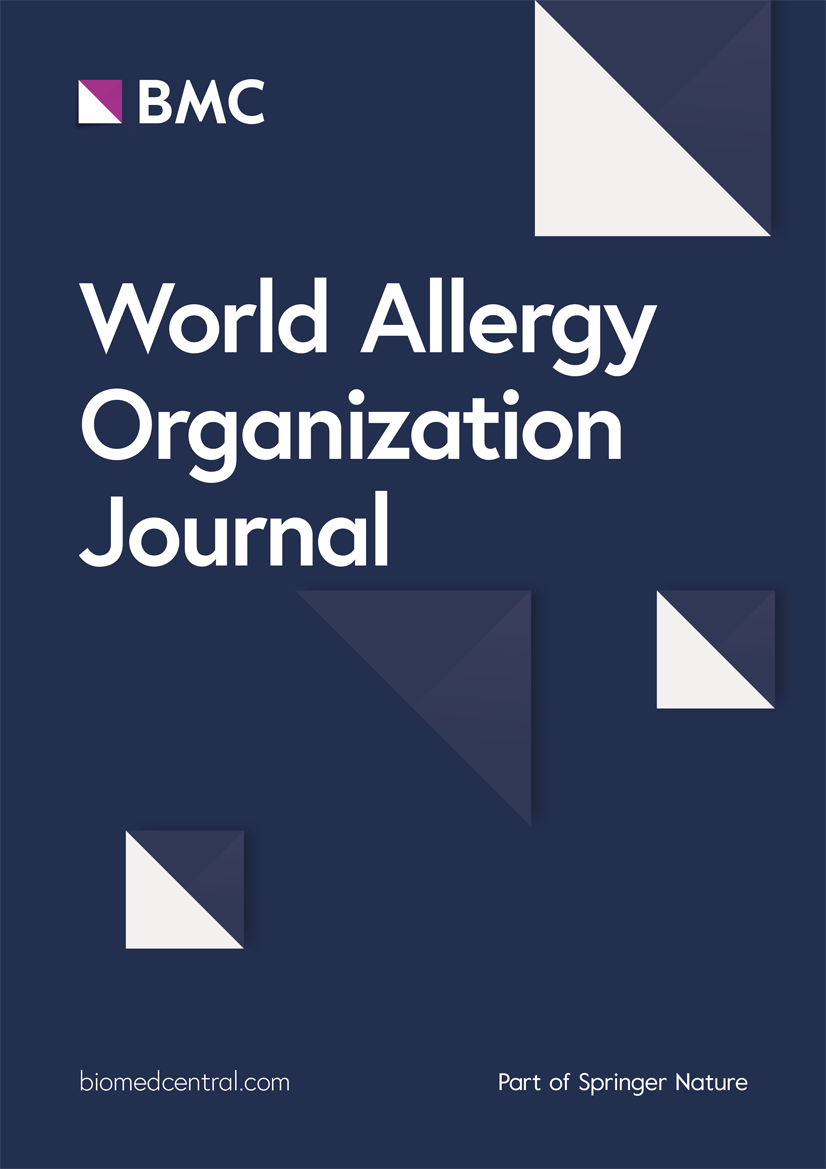A real-life evaluation of SNOT-22 domains in a cohort of CRSwNP patients treated with biologic therapies for 12 months
IF 4.3
2区 医学
Q2 ALLERGY
引用次数: 0
Abstract
Background
Chronic rhinosinusitis with nasal polyps (CRSwNP) is an inflammatory disorder associated with rhinorrhea, nasal obstruction, nasal congestion, hyposmia, anosmia, and facial pain or pressure for over 12 weeks. This study examines the Sino-Nasal Outcome Test 22 (SNOT-22) score and its relationship to nasal, otologyc, sleep and emotional domains in CRSwNP patients during the first year of biologics treatment, comparing the pre-biologics score to that at 1, 6, and 12 months in a cohort of 59 patients with CRSwNP.
Methods
We included 59 patients with CRSwNP (with or without asthma) who received add on therapy with targeted monoclonal antibodies (mAbs). At each visit we administered the SNOT-22 questionnaire and both total score and single domains scores were recorded.
Results
In this real-life, observational study, we found a significant SNOT-22 total score reduction for patients treated with anti-IgE after 1 month, but this significant difference was not maintained at 6 or 12 months compared with the baseline. The use of anti-interleukin 5/5R (IL5/5R) leads to a significant reduction of the SNOT-22 total score after 1 month, which is maintained after 6 months but not at 12 months compared with the baseline. The use of an anti-interleukin 13/4R (IL13/4R) leads to a statistically significant reduction of the SNOT-22 score after 1 month of therapy, which is maintained after 6 and 12 months compared with the baseline. When examining the single domains, we observed that patients who received anti-IL13/4R treatment demonstrated a significant reduction in each domain at each time point (T) compared to the baseline. Patients who received anti-IL5/5R treatment demonstrated an improvement in the nasal domain at each T compared to the baseline. However, the improvement in the otologyc domain was not sustained after 12 months. Similarly, the sleep domain remained unchanged, and the emotional domain only improved significantly after 12 months. Similarly, there was a reduction of the emotional domain in patients treated with anti-IgE.
Conclusion
Our real-life study describes the kinetics over the first year of treatment with mAbs in CRSwNP, showing different patterns in reducing symptoms and improving Health Related Quality of Life (HRQoL). SNOT-22 with the factorial division in 4 domains can help distinguish fast responders from low or non-responders to a mAb based on clinical response after 1 month and more accurately assign the right mAb to the right patient.
在一组接受生物治疗12个月的CRSwNP患者中,对SNOT-22结构域进行了现实评估
慢性鼻窦炎伴鼻息肉(CRSwNP)是一种炎症性疾病,与鼻漏、鼻塞、鼻塞、嗅觉减退、面部疼痛或压力持续12周以上相关。本研究考察了CRSwNP患者在接受生物制剂治疗第一年的鼻-鼻预后测试22 (SNOT-22)评分及其与鼻、耳、睡眠和情绪领域的关系,并比较了59例CRSwNP患者在生物制剂前与1、6和12个月的评分。方法纳入59例CRSwNP患者(伴或不伴哮喘),接受靶向单克隆抗体(mab)加药治疗。在每次访问中,我们都进行了SNOT-22问卷调查,并记录了总分和单域得分。在这项现实生活中的观察性研究中,我们发现抗ige治疗1个月后患者的SNOT-22总分显著降低,但与基线相比,这种显著差异在6个月或12个月时并未维持。使用抗白细胞介素5/5R (IL5/5R)导致1个月后SNOT-22总分显著降低,与基线相比,6个月后维持,但12个月时不维持。使用抗白细胞介素13/4R (IL13/4R)导致治疗1个月后SNOT-22评分有统计学意义的降低,与基线相比,在6个月和12个月后保持不变。当检查单个结构域时,我们观察到接受抗il13 / 4r治疗的患者在每个时间点(T)与基线相比,每个结构域都显着减少。与基线相比,接受抗il - 5/ 5r治疗的患者在每次T时都表现出鼻域的改善。然而,耳部的改善在12个月后并没有持续。同样,睡眠领域保持不变,情绪领域在12个月后才有显著改善。同样,在接受抗ige治疗的患者中,情绪域也有所减少。我们的真实研究描述了CRSwNP中单克隆抗体治疗第一年的动力学,显示出减轻症状和改善健康相关生活质量(HRQoL)的不同模式。SNOT-22具有4个结构域的因子划分,可以根据1个月后的临床反应,帮助区分对单抗快速反应者、低反应者或无反应者,并更准确地将正确的单抗分配给正确的患者。
本文章由计算机程序翻译,如有差异,请以英文原文为准。
求助全文
约1分钟内获得全文
求助全文
来源期刊

World Allergy Organization Journal
Immunology and Microbiology-Immunology
CiteScore
9.10
自引率
5.90%
发文量
91
审稿时长
9 weeks
期刊介绍:
The official pubication of the World Allergy Organization, the World Allergy Organization Journal (WAOjournal) publishes original mechanistic, translational, and clinical research on the topics of allergy, asthma, anaphylaxis, and clincial immunology, as well as reviews, guidelines, and position papers that contribute to the improvement of patient care. WAOjournal publishes research on the growth of allergy prevalence within the scope of single countries, country comparisons, and practical global issues and regulations, or threats to the allergy specialty. The Journal invites the submissions of all authors interested in publishing on current global problems in allergy, asthma, anaphylaxis, and immunology. Of particular interest are the immunological consequences of climate change and the subsequent systematic transformations in food habits and their consequences for the allergy/immunology discipline.
 求助内容:
求助内容: 应助结果提醒方式:
应助结果提醒方式:


